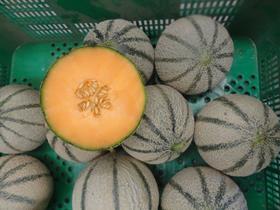
Melon, in its fresh-cut form, remains one of the most prominent items on display in retailers’ chillers as you walk into the store.
But the wholehead product is experiencing a state of constant change. Mark Goodger, senior commercial manager at Essex-headquartered Keelings Fresh International, which supplies a range of melon products both home and abroad, tells FPJ: “There is no doubt that the industry is in state of flux. The major retailers all seem to be going through a transition, one way or the other.
“Whether that is investing in direct purchase models, protecting market share or continuing rapid growth, they all are focusing on long-term strategies and fundamental questions about their core business.”
Melons were one product that felt the recessionary impact of 2008, with demand collapsing by around 30 per cent. The market has since recovered, and this year, more melons have been sold than in 2008, despite the category still having not recovered about 15 per cent of the consumers who used to buy melons before the recession.
On the variety front, while Galia and watermelon remain the fastest growers, and Honeydew holds its own, this is believed to be at the expense of Cantaloupe, which has seen a drop in sales.
However, Goodger notes that there are signs of recovery for this variety. He adds: “For seed houses, growers, suppliers, retailers and customers, the message is clear – bring back the taste. The UK has seen some very exciting varieties during the summer from Europe, and at low prices. Now the real test is for the southern hemisphere to carry the torch with their stepped improvements on taste and, of course, on shelf life.
“European growers will now take a breath and count the cost of the heatwave this summer. Larger fruit and flushes of volume are just some of the factors they faced.
“As production was brought forward, the Spanish supply finished slightly earlier than under normal conditions, causing a temporary gap in the market – especially on watermelons and Galia – which would have at least enabled some recovery for growers, with high demand and higher prices.”
Brazilian exports began arriving in Europe early in September, but fears are rife about the prospect of a fourth consecutive year of drought, compounded by economic and political crises in the self-styled samba nation.
Goodger says: “Growers will remain stoic in the face of adversary, and use this as an opportunity to improve practices in many ways, such as reducing the reliance of direct labour, better-yielding varieties, packaging developments, and so on.
“But at some point, they will need external factors to swing back in their favour. For now, the season looks steady for programmed volumes, as the growers resist the urge to be over-speculative.”
The longer-term outlook for the category is exciting, from Keelings Fresh International’s point of view. Goodger concludes: “The category is well-placed for a consumer taste that values taste and healthy eating with relative value. Added to that, smaller individual fruits are becoming more popular, and are well suited to smaller families.”



